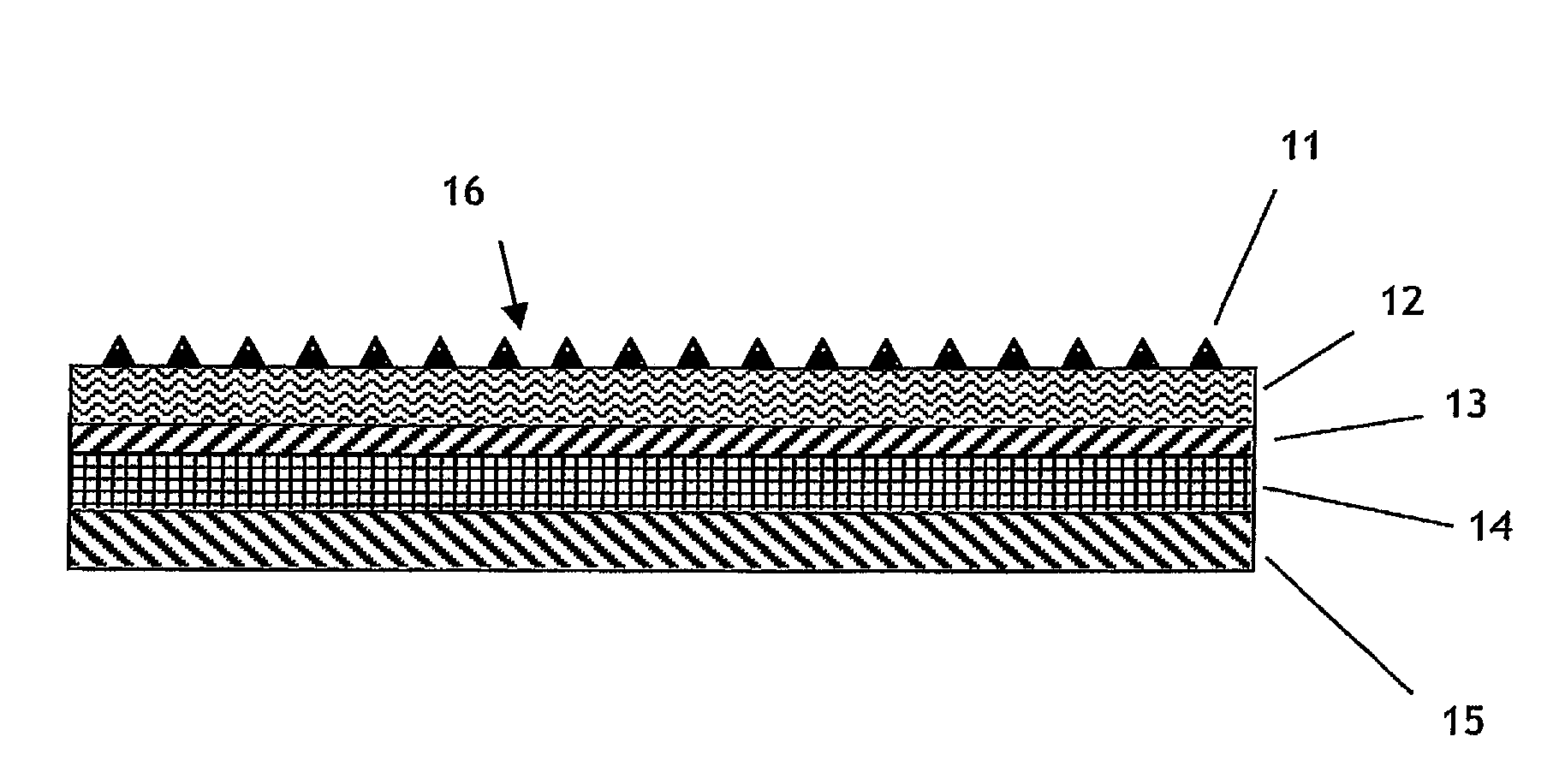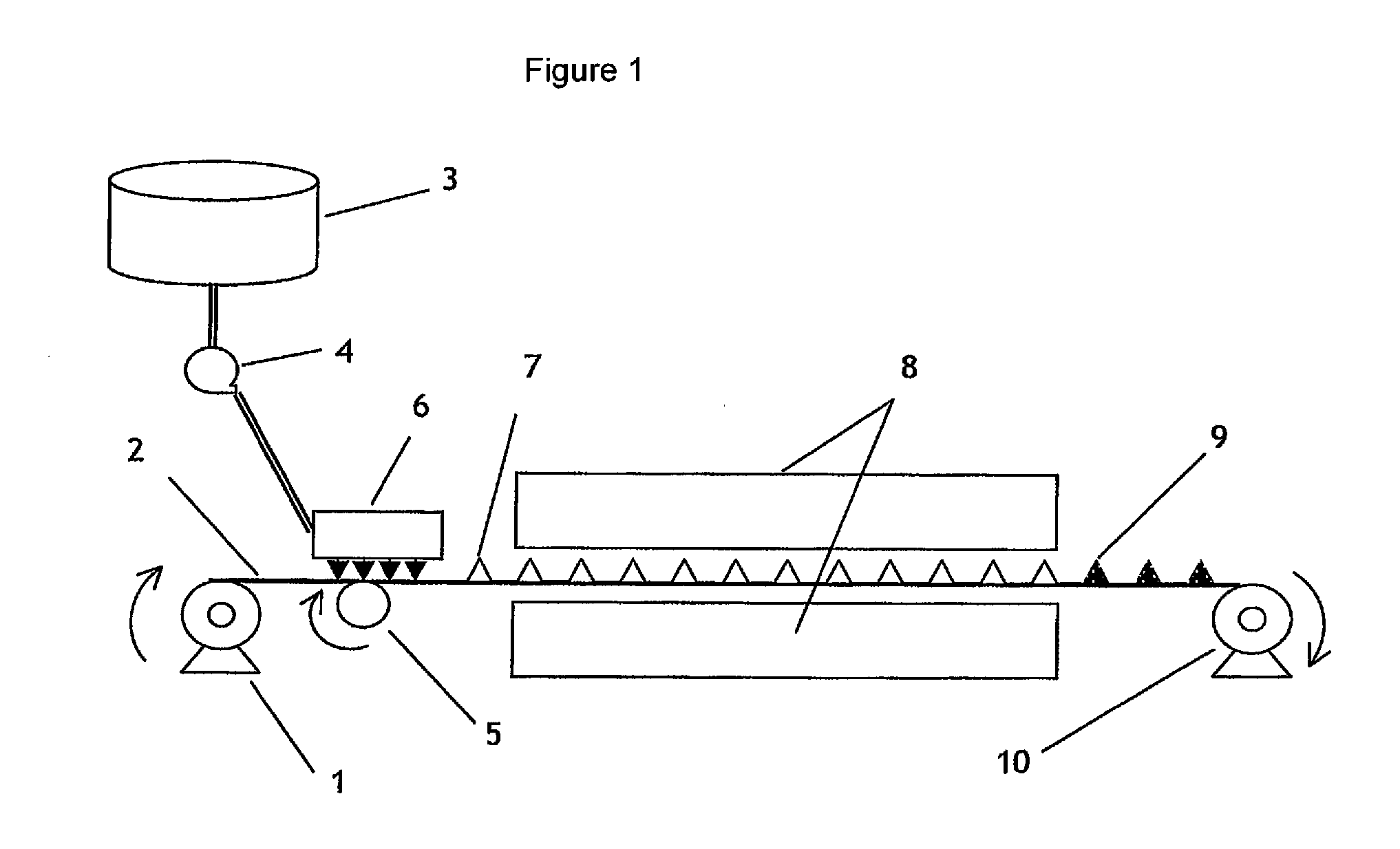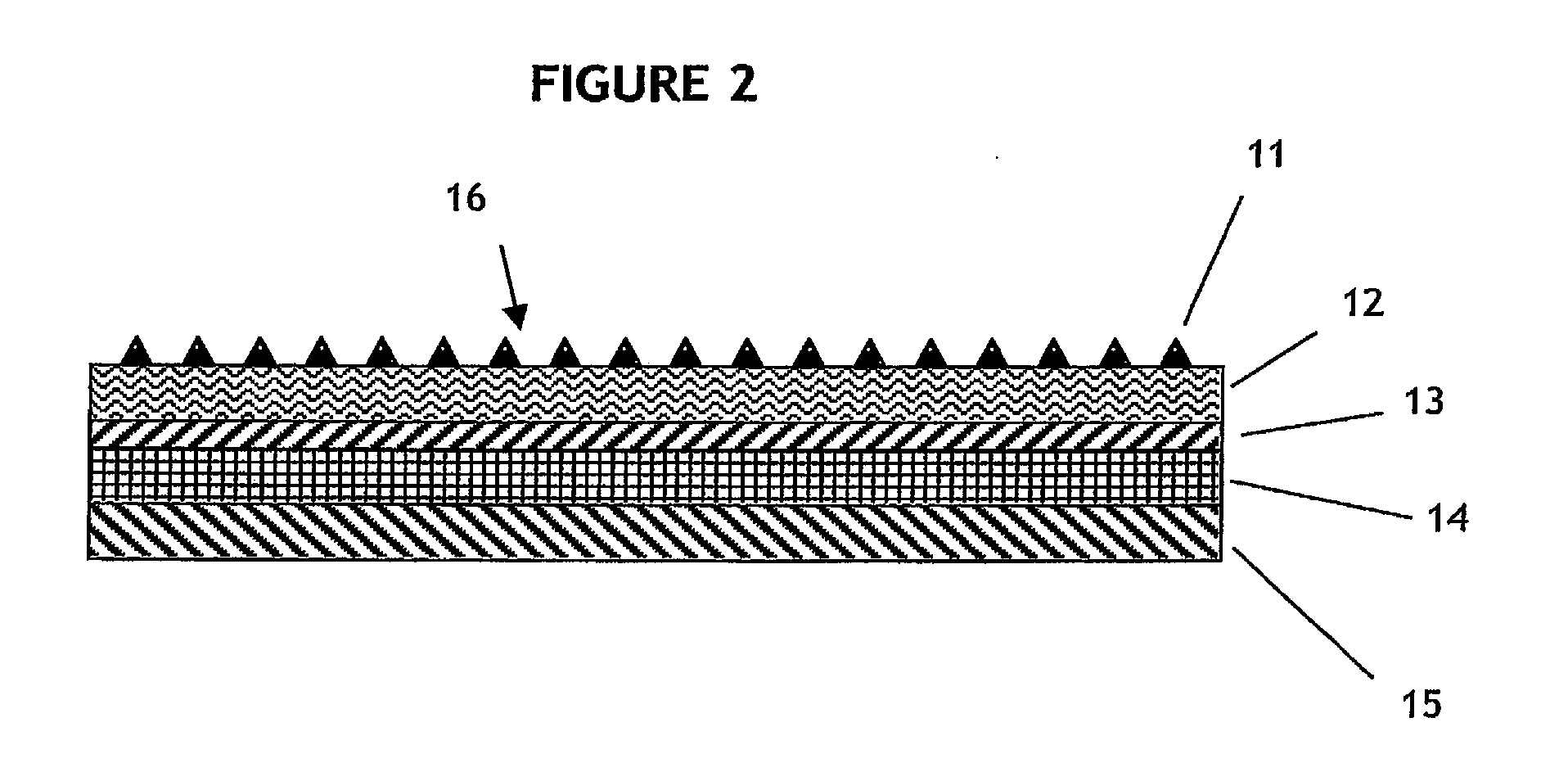Waterproofing Membrane for Use on Inclined Surfaces
a waterproofing membrane and inclined surface technology, applied in the direction of coatings, roof coverings, lamination, etc., can solve the problems of serious safety hazards, reduced friction coefficient of low skid resistant synthetic roofing underlayments is a significant limitation, and general skid resistance is poor
- Summary
- Abstract
- Description
- Claims
- Application Information
AI Technical Summary
Benefits of technology
Problems solved by technology
Method used
Image
Examples
example 1
Mechanically Attached, Non Breathable Roofing Underlayment
[0043]A liquid PVC emulsion formulation containing emulsion grade PVC resin (100 parts), DINP plasticizer (100 parts), Calcium Carbonate (10 parts), Epoxidised Soybean Oil (3 parts) and Calcium Zinc Stabilizer (2 parts) was batch mixed to uniformity at room temperature, whilst eliminating entrapped air and moisture, to emulate the final cured PVC resin properties in Table 3. The mixture was processed, as per FIG. 1, with the pattern being applied to the carrier at room temperature at a line speed of 150 m / min, at a curing oven temperature of 130° C. for 30 seconds cure time, on a 30 gsm nonwoven PP surface carrier sheet, to produce a final cured emulsion coating weight of 30 gsm. A PVC dot pattern as shown in FIG. 7A was produced, possessing 15 dots / inch 2 (232 dots / 100 cm2), and average dot height of 0.3 mm (as measured from surface of carrier to top of dot). The cured PVC dots possessed high shear strength, low modulus, and...
example 2
Self Adhesive Bituminous Roofing Underlayment
[0048]The same roofing underlayment of Example 1 was coated and laminated to a 1 mm thick layer of self adhesive bitumen (self adhesive bitumen formulations are known in the art, generally comprised of SBS polymer and bitumen), thus forming the top side layer. A siliconized PP release film liner was further applied to the exposed side of the self adhesive bitumen, thus forming the bottom side layer. The resulting roof underlayment possessed a breathability of 0.05 US PERMS (ASTM E96A, 23C / 50% RH). This self adhered underlayment membrane was then adhered to the wooden deck and tested for skid resistance as per Example 1. The walking skid resistance and roof loading performance testing results were excellent.
example 3
Mechanically Attached, Breathable Roofing Underlayment
[0049]The skid resistant nonwoven carrier sheet of Example 1 was simultaneously ultrasonically bonded to a 25 gsm LDPE microporous breathable film (Tredegar Film Products) comprising the inner layer, and to a 150 gsm nonwoven PP reinforcing lower layer. The resulting roofing underlayment possessed a breathability of 35 US PERMS (ASTM E96A, 23C / 50% RH), and is considered breathable. This breathable roofing underlayment was mechanically attached to the test roof deck, and tested for skid resistance as per Example 1, and produced excellent results.
PUM
| Property | Measurement | Unit |
|---|---|---|
| height | aaaaa | aaaaa |
| Tensile Yield Elongation | aaaaa | aaaaa |
| solar reflectance | aaaaa | aaaaa |
Abstract
Description
Claims
Application Information
 Login to View More
Login to View More - R&D
- Intellectual Property
- Life Sciences
- Materials
- Tech Scout
- Unparalleled Data Quality
- Higher Quality Content
- 60% Fewer Hallucinations
Browse by: Latest US Patents, China's latest patents, Technical Efficacy Thesaurus, Application Domain, Technology Topic, Popular Technical Reports.
© 2025 PatSnap. All rights reserved.Legal|Privacy policy|Modern Slavery Act Transparency Statement|Sitemap|About US| Contact US: help@patsnap.com



